From May 7 to June 5, 2021, Palazzo Zurla De Poli in Crema is hosting the exhibition Arata. Still Natures, dedicated to one of the genres in which painter Francesco Arata (Castelleone, 1890 - 1956) excelled, an artist who approached the various currents of the early decades of the 20th century while maintaining a proud stylistic independence that accords balance of form, light and color and who, as a man, lived with a sensitive soul but a character bent by pain and narrowness. Thus, after the 2011-2012 exhibition The Places of Water on view in Crema, the Francesco Arata Foundation and Palazzo Zurla De Poli are organizing an exhibition dedicated to Arata’s still life theme.
This is a usual genre in Lombard painting: still life landed in Lombardy in the 16th century with Lorenzo Lotto, Vincenzo Campi, Giuseppe Arcimboldo and Caravaggio. From the pure representation of objects that assume the dignity of subjects, this theme becomes a manifestation of the danimo state, an intimate subject that tells of the pleasure of life sheltered from the passing of the seasons and also the sense of its transience, a memento mori. Over time this painting is enriched with allegories, through which educational messages and moral references pass: each element has a precise and profound meaning. In the twentieth century, painters assiduously frequented still life, one need only think of Giorgio Morandi, and even a sensitive and cultured painter like Francesco Arata interpreted it intensely, throughout the larco of artistic production. Arata controls still life in all its variations, checking with deep sensitivity every mutation and pulsation, revisiting subjects such as game, fruits, tablecloths, bowls, jugs. The painter from Castelleone transforms the composition in each epoch of his work, at first deliberately realist, then, as the 1930s unfolded, more inspired by sensations related to changing situations, moods, the artistic climate, new research, and advancing age that led him to prudent solutions.
Palazzo Zurla De Poli, a sixteenth-century palace that was recently restored, also stands as an ideal place to host the exhibition as it allows a dialogue between Arata’s works and the fresco cycles in the rooms, dated from 1540 to 1586, also revealing the link between Arata and the De Poli family, originally from Castelleone, later moved to Crema, and Arata’s collectors. The works on display are 19 canvases owned by the Arata Foundation and loans from other private collections and five canvases from the De Poli family.
“I strongly wished to host an Arata exhibition, as a tribute to the bond that existed between my family and the Master and making concrete the deep esteem we have for his works, which I have admired since I was a child and among which I grew up,” says Matilde De Poli, head of cultural events at Palazzo Zurla De Poli.
“What fascinates me about this exhibition,” says Gian Maria Arata, son of the painter and president of the Francesco Arata Foundation, “is being able to bring visitors, better and younger, closer to a love of art, history and culture. Of how one can enjoy, in a visit to an ancient and noble palace, the art of the frescoes and furnishings and whatever else pertains to its refined décor.”
“The still lifes on display, dated from 1930 to 1956, tell of growth, narrate the many changes that took place in Arata’s painting and palette over the course of his long career,” Stefania Agosti explains. “From the references to the geometric conception of reality of Cézanne and, later, the Cubists, to the contacts with the Novecento group, to the magic realism and chiarismo of his last years. On the occasion of this exhibition, subtle links are perceived that unite two moments of art seemingly distant from each other and yet so close in this exhibition. The canvases follow one after the other sending clear signals and stimuli to the viewer. We find a still life with game delicately laid on a checked tablecloth, characterized by a rather dark color palette: this painting inevitably brings back memories that Palazzo Zurla De Poli arose as a hunting villa, within an area very rich and lush with vegetation; Arata’s painting thus recalls its ancient and original nature.”
“There is much of the lesson of the supreme Cézanne in the series of pictorial compositions that can be admired here,” Nicoletta Colombo argues. “First of all, the desire to make the visible legible, in the sense that there is no need to slavishly paint objects as inanimate repertoires, because what the artist achieves is the opening of vision to the meaning of vitality and at the same time of transience that fruits and objects awaken, resonating to the senses of the observer to the point of conveying sensations and emotions. Yet here we also find the modern meaning of nature, understood as the possibility of man to overcome the old nineteenth-century naturalism and build, restructure reality according to concepts of recovering a space of creation in which the artist-artist with things dissects and composes rhythms. In this sense, the overcoming of the mere decorativism in which Cubism was stranded takes place and, by contrast, the architectural concept of form is assimilated, which is also gnoseology, the capacity for knowledge and understanding.”
The exhibition, accompanied by a catalog introduced by Nicoletta Colombo, is open Tuesday through Friday from 2:30 to 6:30 p.m., Saturdays, Sundays and holidays from 10:30 a.m. to 12:30 p.m. / and / 2:30 to 6:30 p.m. Closed on Mondays. Admission to the exhibition: 5 euros. Free admission: children under 14, medical personnel with ID, disabled, journalists with ID, Art History undergraduates. Reservations required for the weekend by writing to: info@palazzozurla-depoli.it. On Saturdays and Sundays there are 3 rounds of guided tours of the exhibition and the Palace in small groups of maximum 10 people, lasting 1 hour, departing at: 11:00 am / 4:00 pm / 5:00 pm. Guided group tour of Zurla De Poli Palace: 10 euros per person. Reservation required by writing to: info@palazzozurla-depoli.it.
In addition, in order to invite children to discover the secrets of the compositions darte, there will be an interactive tour of the exhibition lasting 1 hour and 30 minutes, where children aged 5 to 8 years and children aged 8 to 12 years will be guided by Ester Tessadori in search of the details of the paintings and the knowledge of Arata’s still lifes. Afterwards, they will be offered a workshop in which they will transform into young artists and experience the open-air creation of a still life in the picturesque setting of the palace garden (Sunday, May 30, 3 p.m. / children 5-8 years old). Interactive group visit curated by Ester Tessadori: 15 euros per participant upon mandatory reservation by writing to: ester.tessadori@gmail.com. For more information you can visit the Palazzo Zurla De Poli website.
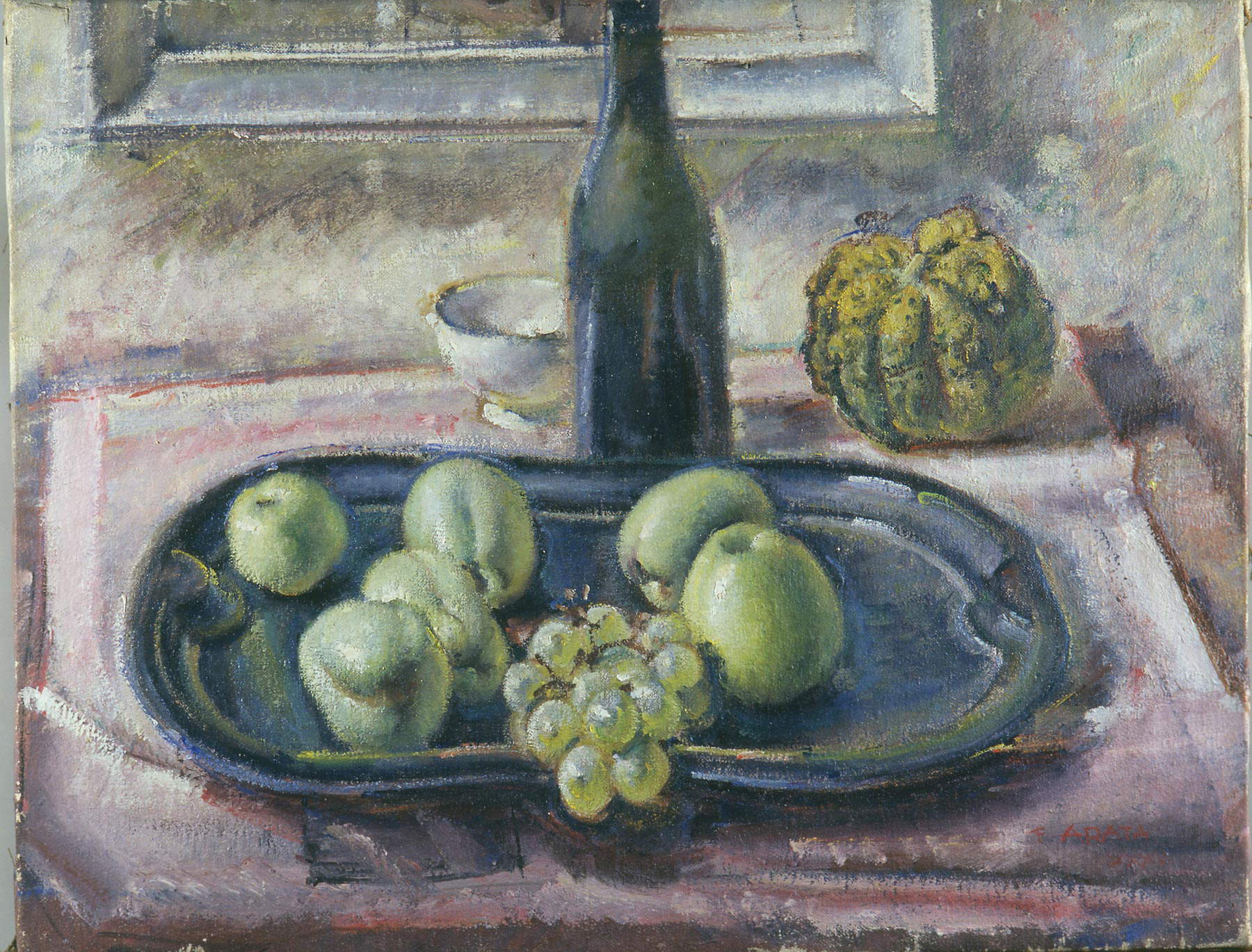 |
| Francesco Arata, Still Life (1935; oil on canvas, 55 x 70 cm; Fondazione Arata) |
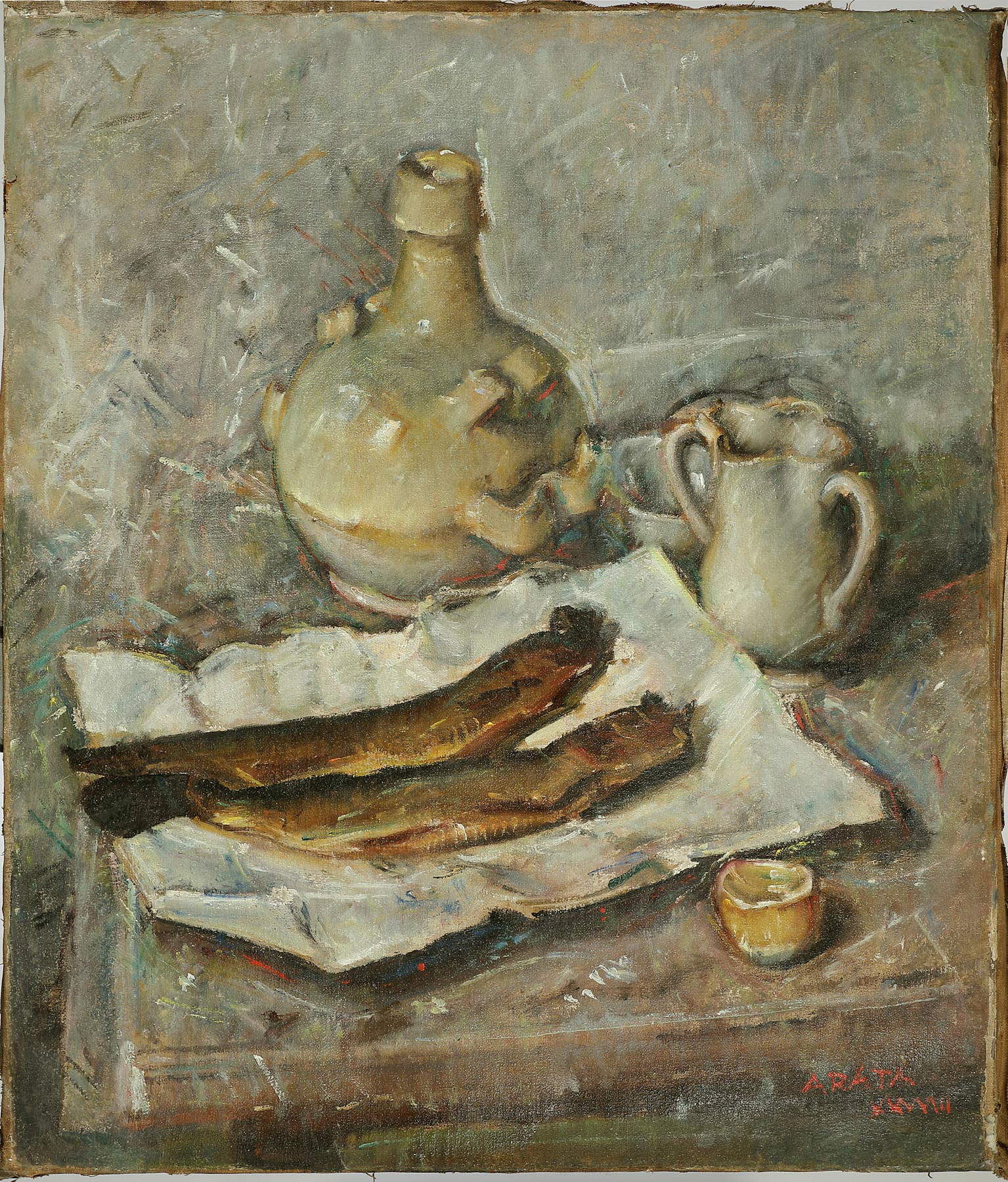 |
| Francesco Arata, Still Life with Herring (1938; oil on canvas, 70 x 60 cm; Fondazione Arata) |
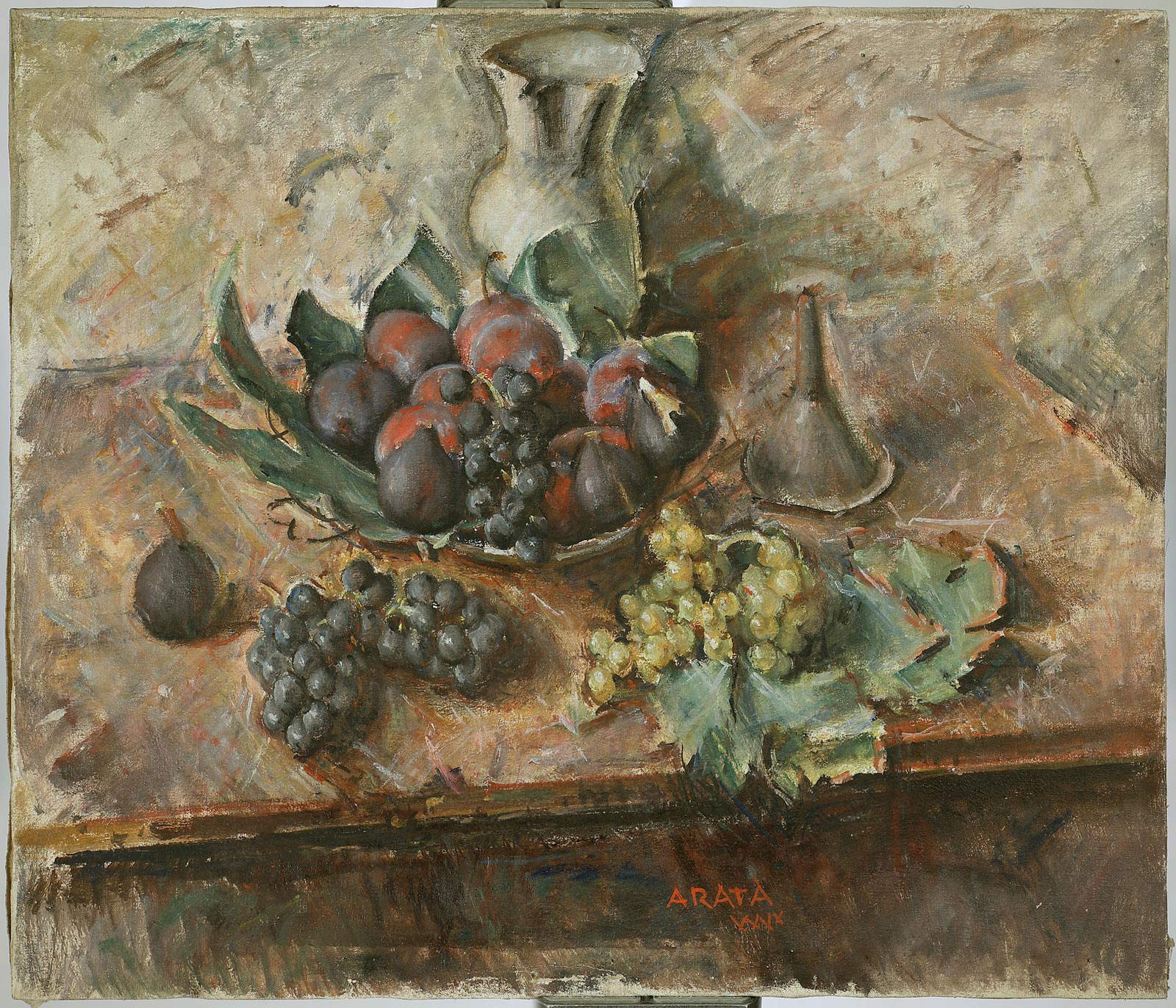 |
| Francesco Arata, Still Life with Grapes and Figs (1940; oil on canvas, 60 x 70 cm; Fondazione Arata) |
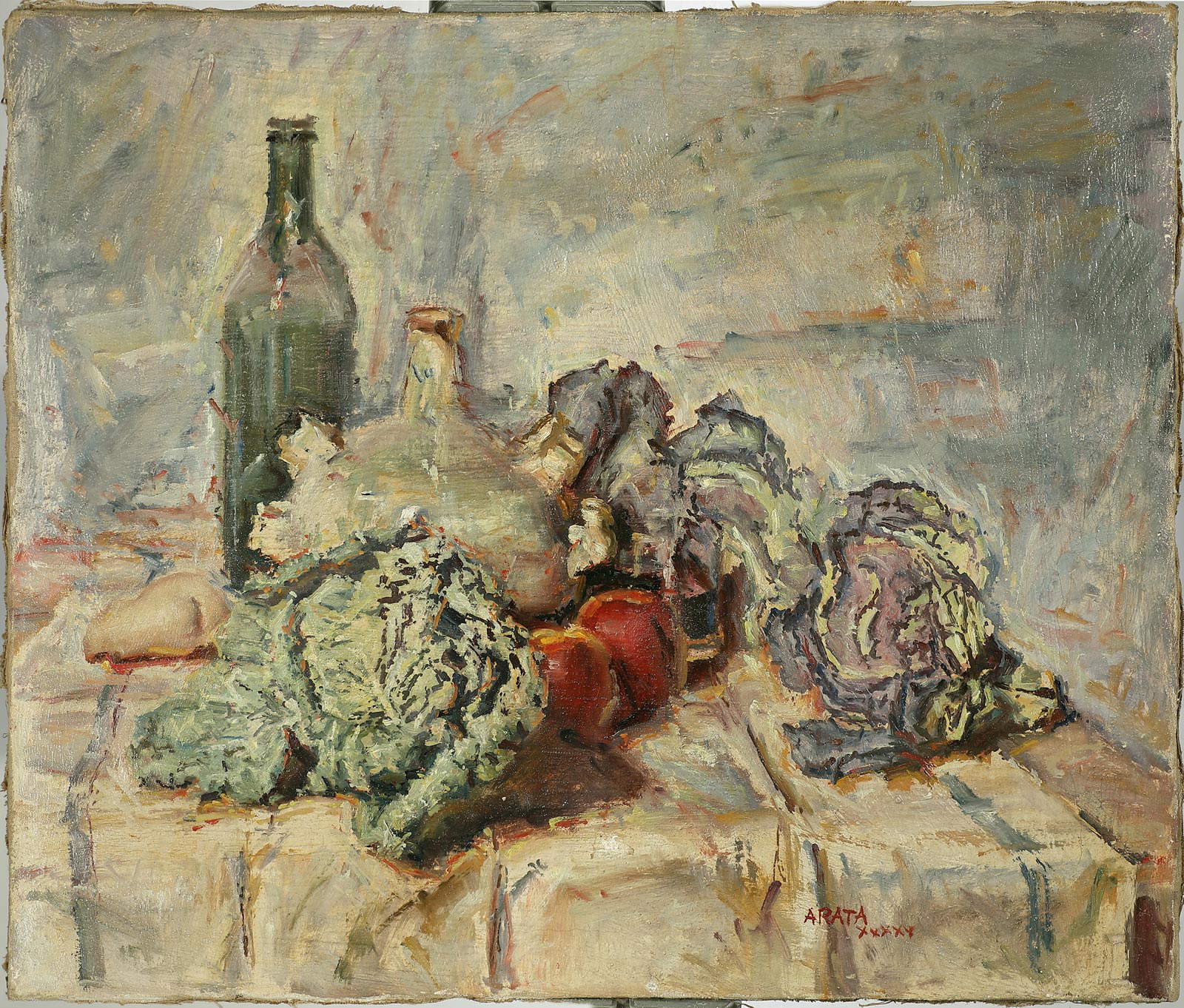 |
| Francesco Arata, Still Life with Savoy Cabbage (1945; oil on canvas, 60 x 70 cm; Fondazione Arata) |
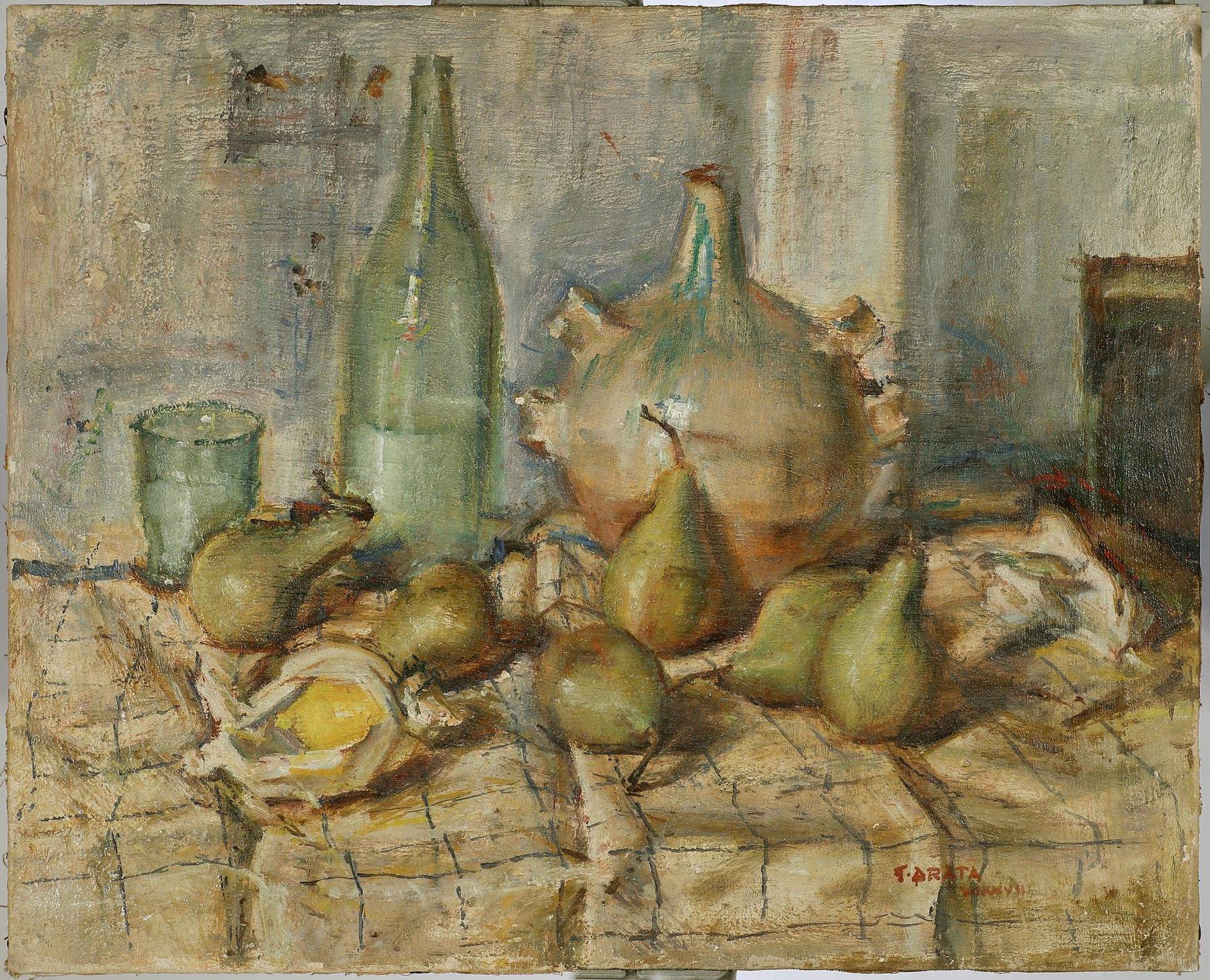 |
| Francesco Arata, Still Life with Pears, Bottle and Pitcher (1947; oil on canvas, 65 x 80 cm; Fondazione Arata) |
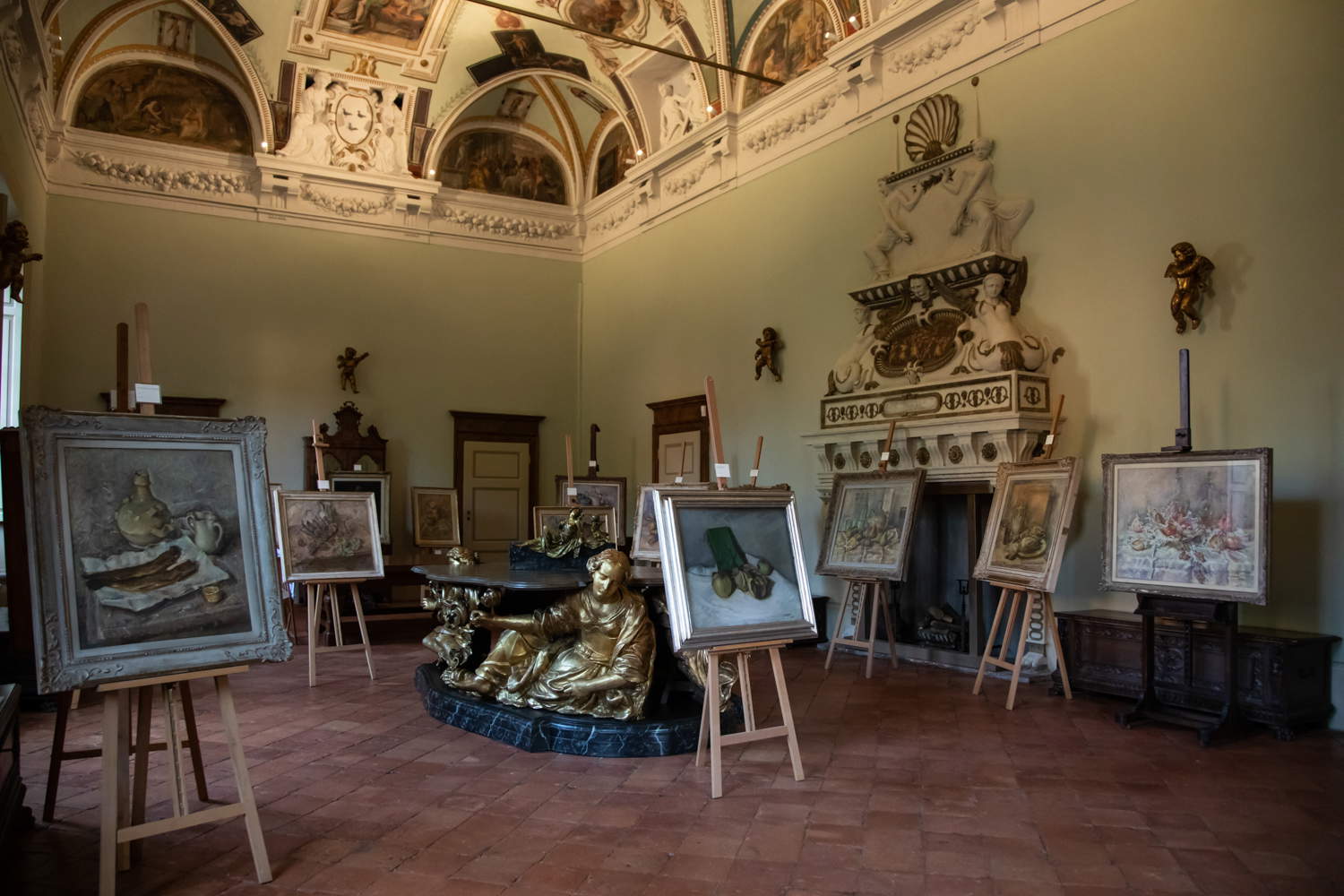 |
| Exhibition Hall |
 |
| Francesco Arata's still lifes are on display in Crema |
Warning: the translation into English of the original Italian article was created using automatic tools. We undertake to review all articles, but we do not guarantee the total absence of inaccuracies in the translation due to the program. You can find the original by clicking on the ITA button. If you find any mistake,please contact us.